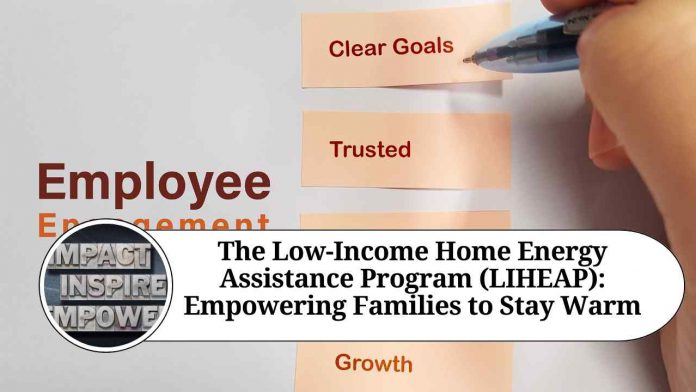Introduction
In today’s modern world, access to reliable and affordable energy is essential for a comfortable and safe living environment. However, many low-income households struggle to meet their energy needs, especially during harsh weather conditions. Fortunately, there are programs in place to provide assistance and support to those facing energy-related challenges. One such program is the Low-Income Home Energy Assistance Program (LIHEAP). In this blog, we will explore LIHEAP and its crucial role in helping low-income families stay warm and secure during difficult times.
Understanding LIHEAP: The Low-Income Home Energy Assistance Program (LIHEAP) is a federally funded program in the United States aimed at assisting low-income households in meeting their energy expenses. Established in 1981, LIHEAP operates under the Department of Health and Human Services (HHS) and distributes funds to states, tribal organizations, and territories to administer the program at the local level.
How LIHEAP Works: LIHEAP primarily focuses on providing financial assistance to eligible households, helping them cover the costs of heating or cooling their homes. The program offers two types of assistance:
- Heating Assistance: During the colder months, LIHEAP helps eligible households pay for heating their homes. This can include the cost of electricity, natural gas, oil, propane, or other heating fuels. The program aims to ensure that families do not have to choose between staying warm and meeting other essential needs.
- Cooling Assistance: In regions with hot climates or during the summer months, LIHEAP also provides support for cooling-related expenses. This can include air conditioning costs or assistance with energy-efficient measures to reduce the need for excessive cooling.
Eligibility and Application Process:
To qualify for LIHEAP, households must meet specific income guidelines set by the federal government. These guidelines take into account the household’s size and income level. Eligibility criteria may vary slightly from state to state, but the program aims to prioritize those with the greatest need.
The application process for LIHEAP is typically straightforward and can be done online or through local community organizations. Applicants need to provide documentation to verify their income, residence, and energy-related expenses. Once approved, the program provides financial assistance directly to the energy providers or sends a check to the eligible households, depending on the state’s implementation.
Benefits of LIHEAP:
- Ensuring Energy Security: LIHEAP plays a crucial role in ensuring that low-income families have access to a safe and adequate energy supply. By providing financial assistance, the program prevents households from experiencing utility disconnections or living in unsafe conditions due to lack of heating or cooling.
- Reducing Energy Burden: Energy costs can constitute a significant portion of a low-income household’s expenses. LIHEAP helps alleviate this burden by assisting with energy payments, freeing up resources that can be allocated to other essential needs like food, healthcare, or education.
- Promoting Energy Efficiency: LIHEAP encourages energy efficiency measures by providing assistance for weatherization and energy-related improvements. By making homes more energy-efficient, the program helps reduce energy consumption and lower overall costs for eligible households.
- Health and Safety Benefits: Adequate heating and cooling are essential for maintaining good health and well-being. LIHEAP’s assistance ensures that families can afford to keep their homes at safe and comfortable temperatures, reducing the risk of illnesses or accidents related to extreme temperatures.
Conclusion
The Low-Income Home Energy Assistance Program (LIHEAP) is a lifeline for millions of low-income households across the United States. By providing financial assistance for heating and cooling expenses, LIHEAP empowers families to stay warm, safe, and secure.
Read more useful content:
Frequently Asked Questions (FAQs)
Q. What is LIHEAP?
LIHEAP stands for Low-Income Home Energy Assistance Program. It is a federally funded program in the United States that provides financial assistance to eligible low-income households to help them cover their home energy expenses.
Q. Who is eligible for LIHEAP?
Eligibility for LIHEAP is based on income and household size. Specific income guidelines are set by the federal government, and eligibility criteria may vary slightly from state to state. Generally, households with income at or below 150% of the federal poverty level are eligible to apply.
Q. What types of energy expenses does LIHEAP cover?
LIHEAP primarily assists with heating expenses during the colder months, including the cost of electricity, natural gas, oil, propane, or other heating fuels. Some states also offer cooling assistance during hot weather or provide support for energy-efficient measures to reduce overall energy costs.
Q. How can I apply for LIHEAP?
To apply for LIHEAP, you need to contact your local LIHEAP office or the designated agency in your state. Applications can often be submitted online or in person. You will be required to provide documentation to verify your income, residency, and energy-related expenses.
Q. When should I apply for LIHEAP?
It is recommended to apply for LIHEAP as soon as possible, especially when the program opens for applications. LIHEAP operates on a first-come, first-served basis, and funding is limited. Applying early increases your chances of receiving assistance.
Q. How much financial assistance can I receive through LIHEAP?
The amount of financial assistance provided by LIHEAP varies based on factors such as household income, family size, and energy costs. The program aims to help eligible households with a portion of their energy bills, but the specific amount will depend on your individual circumstances and available funding.
Q. Does LIHEAP cover all of my energy expenses?
LIHEAP typically does not cover all of your energy expenses. It is designed to provide supplemental assistance to eligible households. It is important to continue paying your energy bills and work with your energy providers to manage your overall energy costs.
Q. Can I apply for LIHEAP if I rent my home?
Yes, both homeowners and renters can apply for LIHEAP assistance as long as they meet the income eligibility criteria. Renters may need to provide additional documentation, such as a lease agreement or landlord verification, to complete their application.
Q. Is LIHEAP available year-round?
LIHEAP is typically available during specific application periods, which vary by state. The program is primarily focused on assisting households during the colder months when heating needs are highest. However, some states may offer crisis assistance throughout the year for emergency situations.
Q. Are there any additional benefits or services provided by LIHEAP?
In addition to financial assistance, LIHEAP may offer other benefits and services depending on the state and local program implementation. This can include energy education, weatherization assistance, and referrals to other social service programs that may benefit low-income households.















